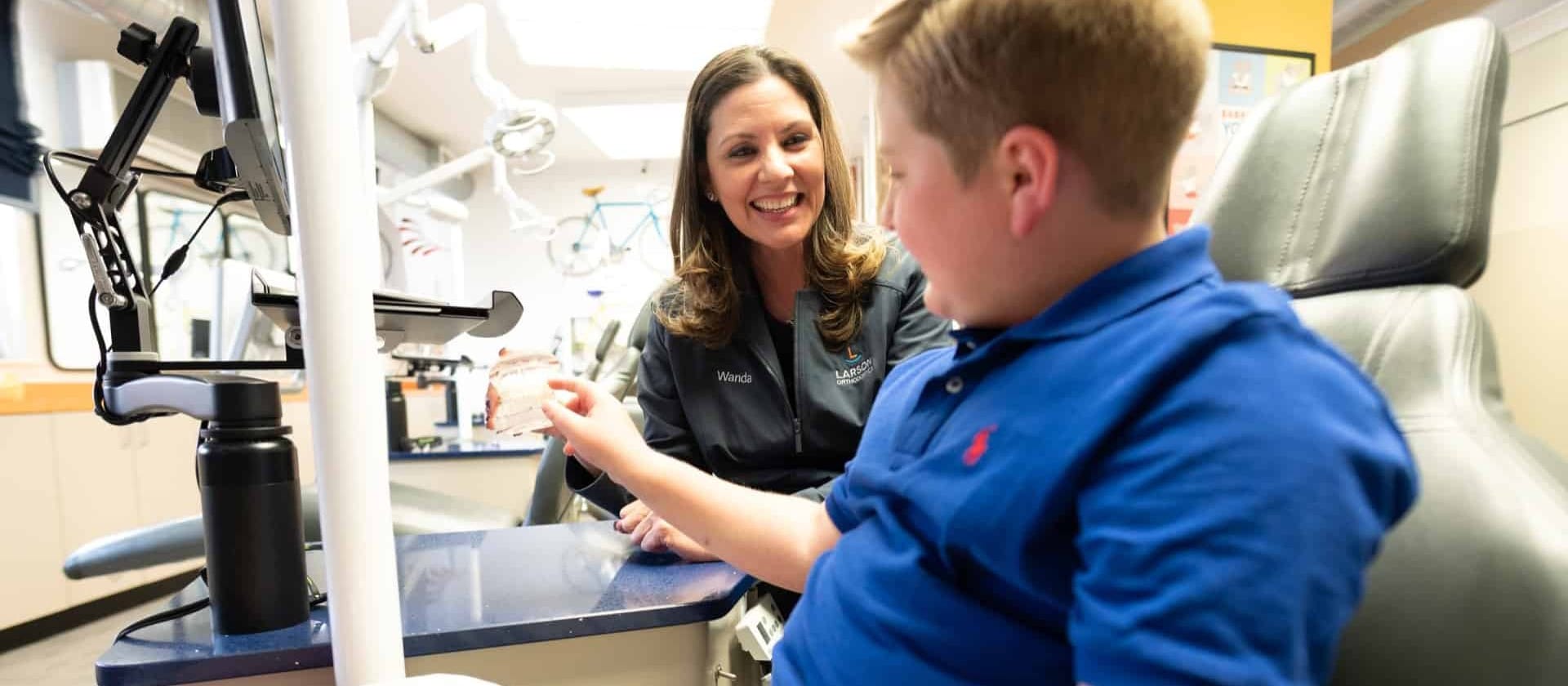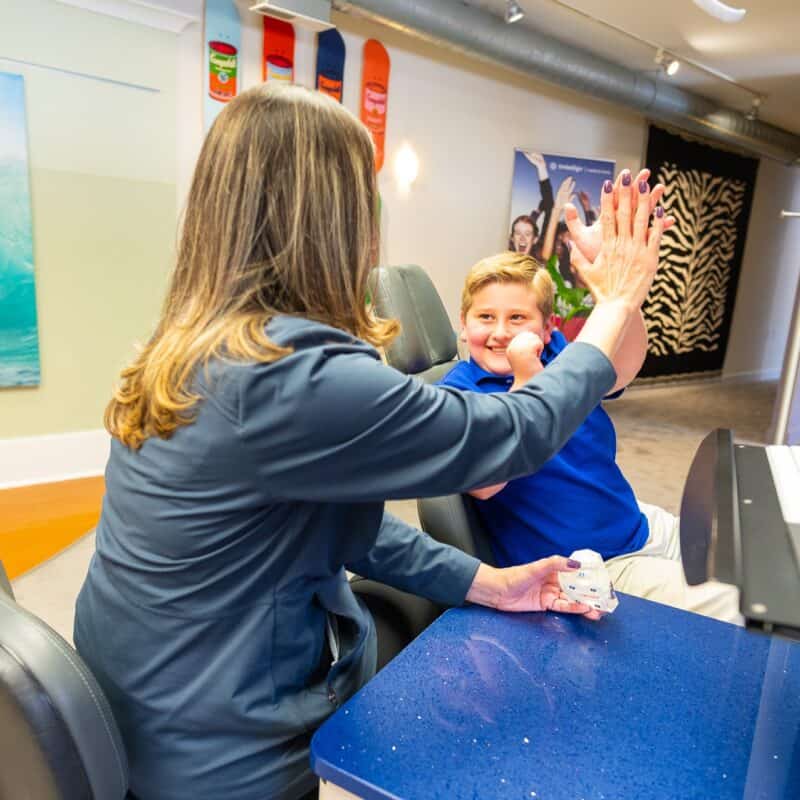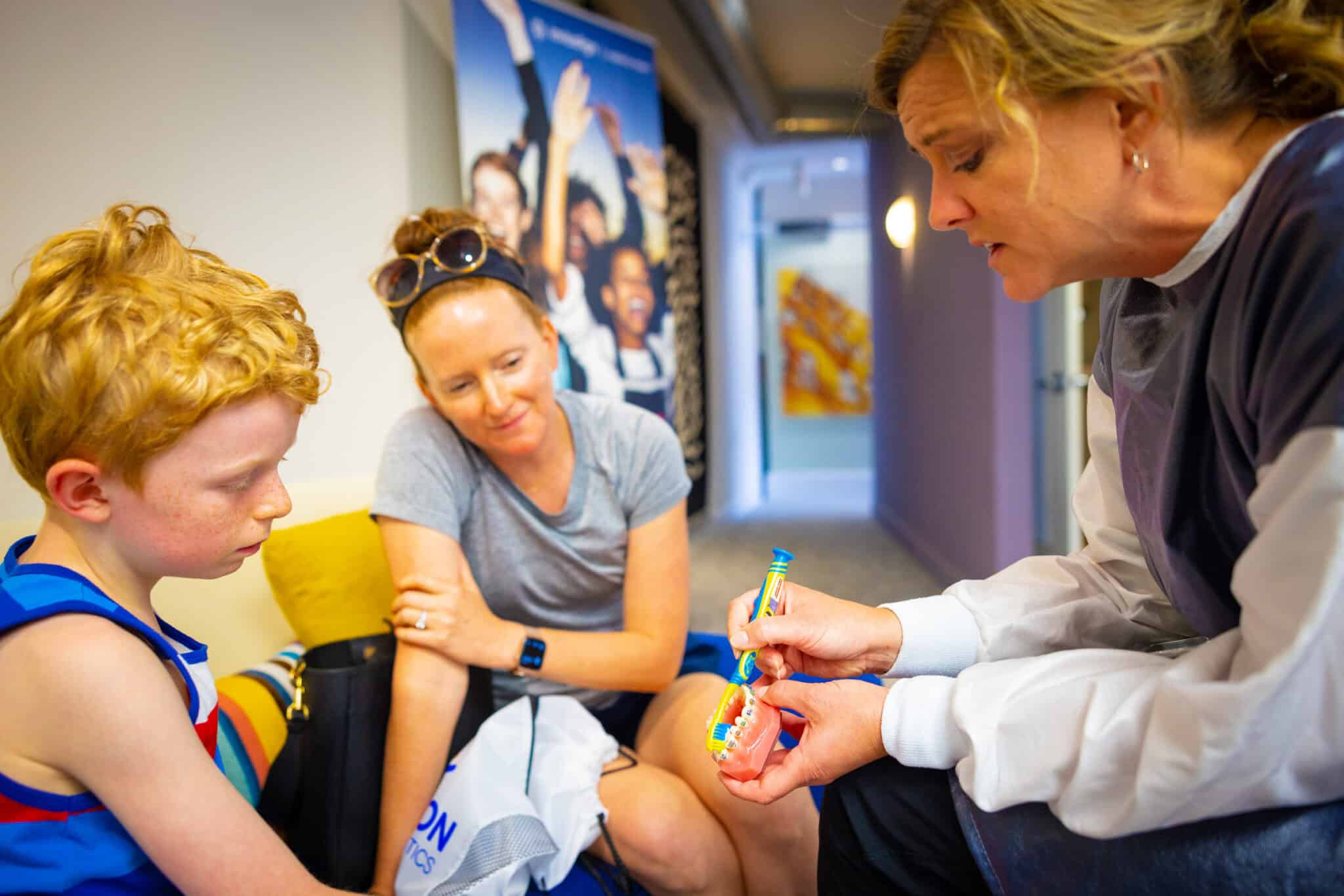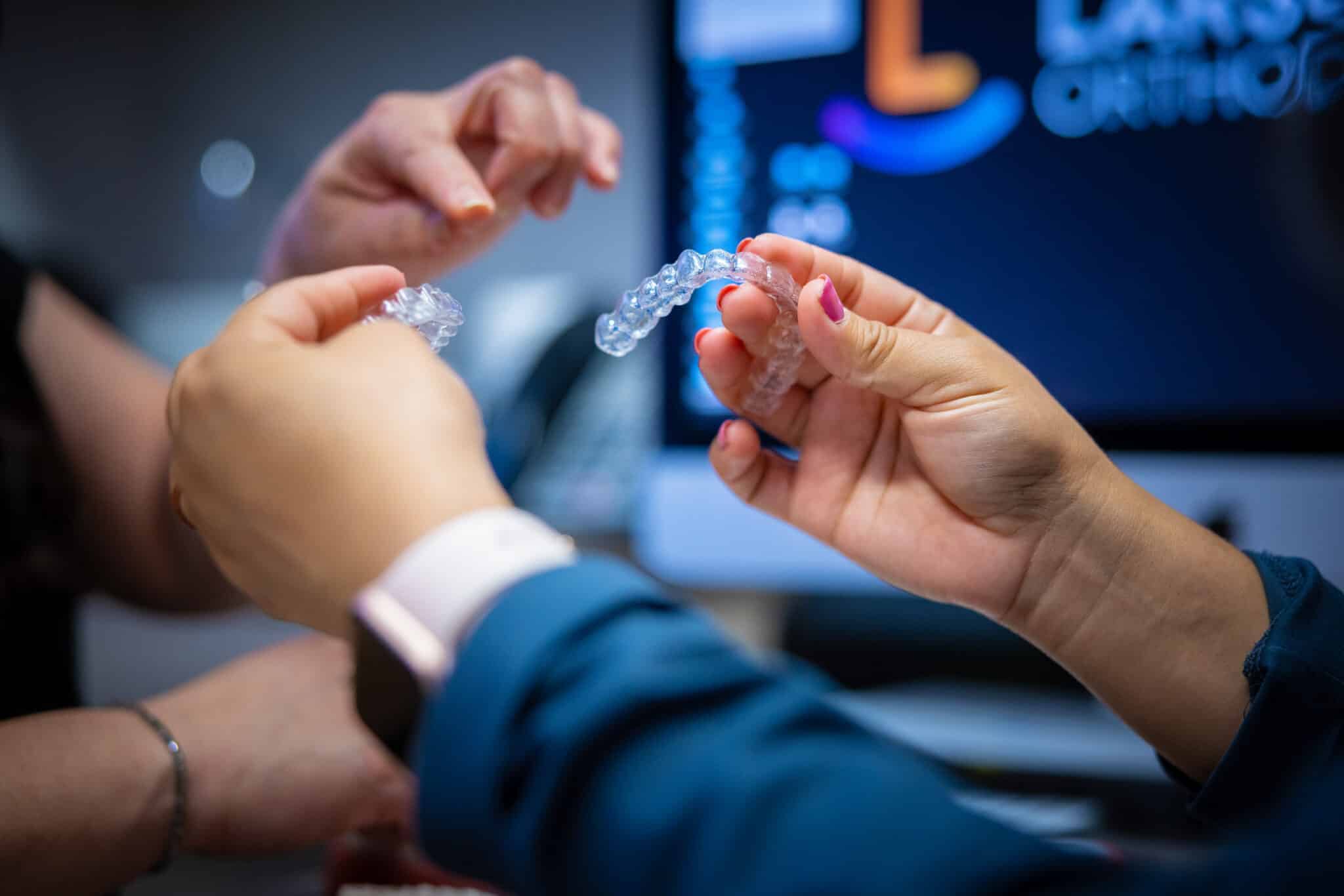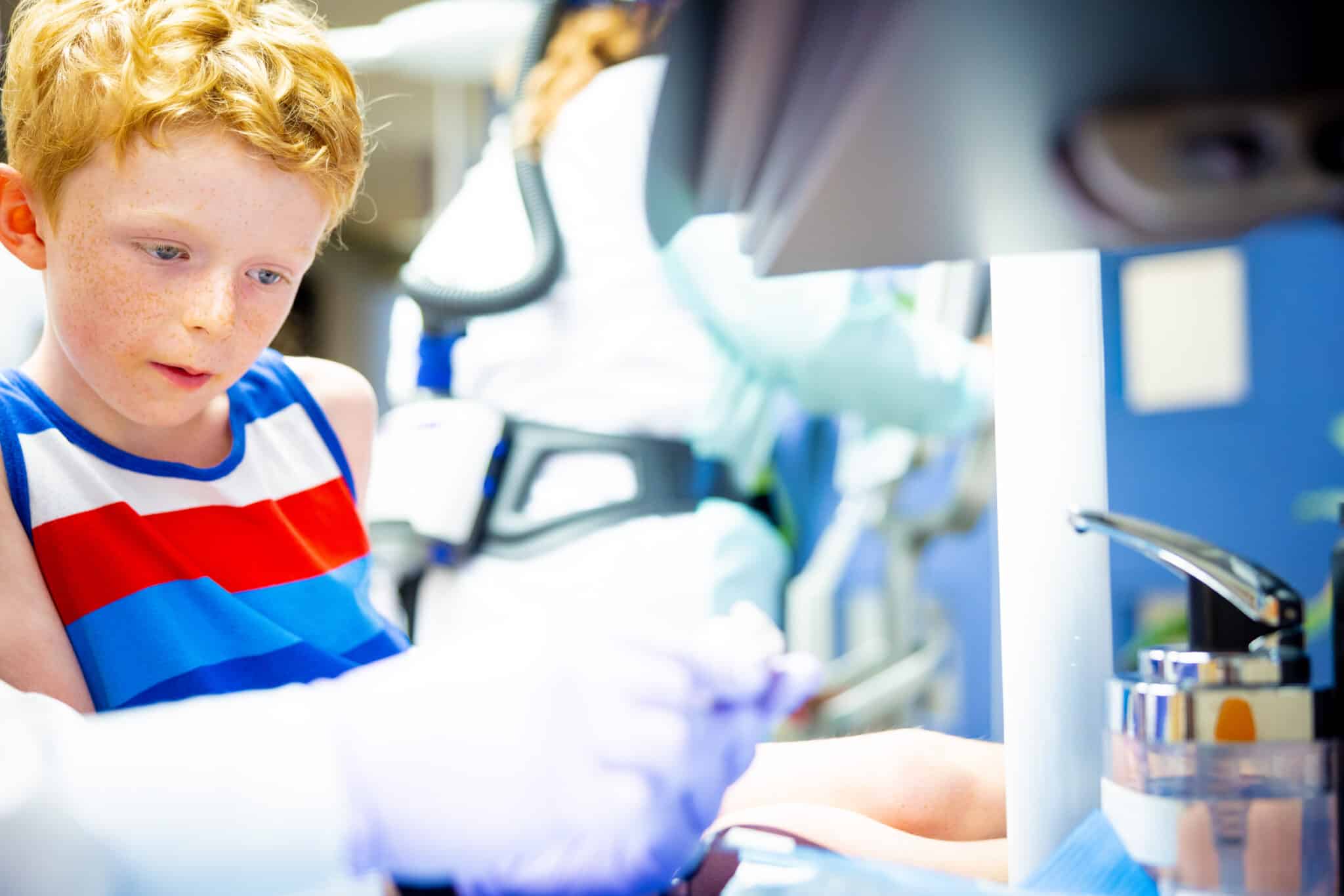Braces use gentle pressure to move your teeth into the correct positions. Sometimes, though, your braces need a bit of extra help. That’s where rubber bands come in. They provide a little extra “oomph” to put your teeth in their proper place. What do rubber bands do for braces? They do everything from closing gaps in your teeth to moving your back teeth so you no longer have a crossbite.
At Larson Orthodontics, we hear questions about rubber bands, also called elastics, all the time. “Why do I have to wear rubber bands?” “What do elastics do to your teeth?” “Do I have to eat with rubber bands on my braces?” We have answers to all of those and more! Let us give you some info on rubber bands and why they’re so important to your orthodontic treatment with braces.
What do Rubber Bands do for Braces?
Our patients’ biggest question is, “do you have to wear elastics with braces?” Your braces do a lot to move your teeth, but they may not be able to move specific teeth in a particular direction or need more help correcting things like a crossbite. This is when your back upper teeth sit outside the lower teeth instead of in line with them.
Elastics have an important purpose with braces. Rubber bands apply an extra amount of force to certain areas of your mouth. They give a bit of pull to those areas to fix specific problems. For example, we can use rubber bands to close a gap between your teeth or a crossbite on one side of your mouth.
Rubber bands can be used to help fix overbites, underbites, crossbites, and gapped teeth. You can also use them to help straighten teeth that might turn or lean forward or backward.
Why Are There Different Sizes of Rubber Bands for Braces?
You may notice that your rubber bands are different sizes. Some are thicker than others. Why is that? It’s simple. Different sizes of rubber bands have different functions for your braces.
Some rubber bands need to stretch farther or exert more force, so they may be thicker in width. Thinner rubber bands may exert less pressure or need to stretch a shorter distance. That’s why you may get more than one set of rubber bands from your orthodontist. The key is to wear the correct rubber bands in the right spot and wear them consistently. It’s also important to wear suitable rubber bands at the right time because knowing when you wear elastics with braces is just as important. You might wear the thicker ones first, then move to the thinner ones later. You might also ask, “does my orthodontist actually know if I wear my elastics?” Yes, yes, we do.

How Are Rubber Bands Used With Braces?
Rubber bands can be used in several ways, which are divided into “classes.” Here are the ways we may use rubber bands with your braces.
- Class 1: To close gaps in your teeth. The rubber band is placed horizontally from one tooth to another to eliminate that gap.
- Class 2: To correct an overbite. The rubber band is stretched from the front teeth on your upper jaw to the back molars of your lower jaw.
- Class 3: To correct an underbite. We use rubber bands to connect the front teeth of your lower jaw to the molars of your upper jaw.
- Vertical: To correct an open bite. The rubber band goes straight up and down on your front teeth to connect the upper and lower teeth.
- Cross: To correct a crossbite. The rubber bands cross over your front teeth to connect your upper and lower jaws.
Dos and Don’ts of Rubber Bands With Braces
There are several dos and don’ts for rubber bands with braces. Here are a few tips to keep in mind.
The Dos
- Wear your rubber bands as prescribed. Usually, that means overnight, but it can mean longer, depending on your treatment plan.
- Carry a package of rubber bands with you wherever you go, so you can put new ones in if needed.
- Call us if you run low on your rubber bands. We want to make sure you always have rubber bands available.
- Wash your hands before putting your rubber bands in your mouth!
- Be creative! Pick your favorite colors, and mix and match!
The Don’ts
- Don’t double your rubber bands, such as if you run out of a thicker band; try to use two thinner ones. You can damage your teeth. Call us to get the correct size rubber bands!
- Don’t overstretch your rubber bands. Certain bands go between certain teeth. Stretching the band too far can render it ineffective.
- Don’t reuse your rubber bands! Once you take them out, toss them!
- Don’t neglect to wear your rubber bands. Not wearing them can prolong your braces treatment.
Keep these dos and don’ts in mind when wearing and using rubber bands with braces. The more you stick to your treatment plan regarding rubber bands, the faster your treatment will finish.
Get Started With Braces Today
We can help you with your braces and rubber bands, and we can get you started on treatment with braces whenever you are ready. If you’re in the Alexandria, VA, area, you can start with a virtual consultation anytime or anywhere through a web browser or mobile phone!
If you have more questions about rubber bands, Larson Orthodontics has the answers. Just ask!



